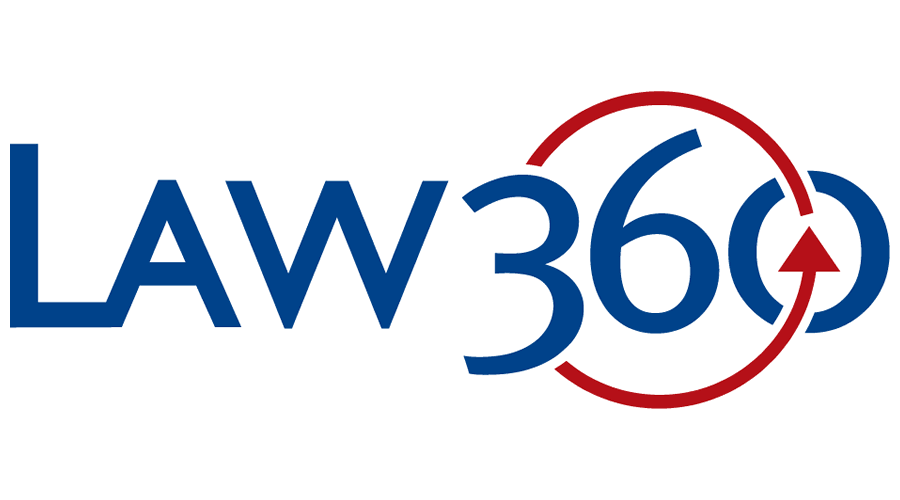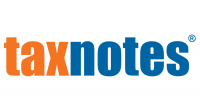
Law360 (February 12, 2021, 6:42 PM EST) -- Monte Silver
This article discusses the opportunities that small and medium-sized businesses have for obtaining tax and tax compliance-related relief during President Joe Biden's term.
Given the razor-thin majority that Democrats have in Congress and Biden's priority in assisting small and medium-sized businesses, such businesses have significant potential for achieving a wide range of regulatory relief from the U.S. Department of the Treasury.
To accomplish this, however, small and medium-sized businesses and the few trade associations that represent them must develop a defined priority list of relief sought, leverage relatively unknown yet powerful federal laws that require the Treasury to protect them, and enlist the participation of the small and medium-sized business community community via e-advocacy.
Post-Election Realities
Both before and after the election, the priorities of Biden and the Democrats have been clear: Large corporations must pay their fair share and smaller businesses, which have been hammered by COVID-19, should get a break.[1]
Furthermore, Biden and the Democrats wish to show some successes in the short-term. As Sen. Debbie Stabenow, D-Mich., a senior Democrat on the Senate Finance Committee said, "I think the goal would be to get things done in the first half of the year."[2]
The problem is that in Congress, the Democrats have no room for maneuvering. As is already clear from the COVID-19 bill being negotiated, the Republicans will now become the obstructionists and block the legislative agenda of the Democrats.
Given their narrow majority, the Democrats will invest in legislative battles only on top-priority issues where they can muster a majority, such as COVID-19 relief. Thus, to the full extent possible, the Biden administration will seek to circumvent Congress and achieve what it can through federal agencies and the regulatory process.[3]
The Regulatory Fix
The regulatory fix — relief granted by federal agencies generally, and by Treasury specifically — offers a powerful form of relief for several reasons.
First, Treasury regulations which interpret tax laws passed by Congress have the weight of law. In issuing regulations, Treasury has significant leeway in deciding how to interpret the law.
Second, informally, Treasury has tremendous flexibility is how it enforces the law.
Equally important, lobbying a federal agency — such as Treasury — is far more likely to produce favorable results than is lobbying congress for the following reasons:
The number of decision makers at the Treasury — or any agency — is very small. Ultimately, it comes down to one person — the secretary of the treasury.
At the Treasury — or other agencies — the considerations are mainly professional, not political.
Large multinational corporations are aware of the importance and availability of the regulatory fix. In fact, after the Tax Cuts and Jobs Act[4] became law, large corporations and their lobbyists descended on then-Secretary of the Treasury Steven Mnuchin.[5] And Mnuchin, having come from a corporate background, was there to help.[6]
Given the stated priorities of both Biden and Secretary of the Treasury Janet Yellen, however, it appears that under the current administration large corporations will not have as receptive an ear. For small and medium-sized businesses, the opposite is true. Small and medium-sized businesses have an opportunity.
At least in theory, both the U.S. Small Business Administration and the National Small Business Association — the largest small and medium business association — are aware of the power of regulation relief.[7]
In practice, however, these two organizations do very little in terms of active regulatory advocacy.
First, the SBA Office of Advocacy is without a chief advocate, the very person responsible for all aspects of advocacy.
Second, the SBA reports display that while it writes letters and organizes roundtable discussions — items it can easily highlighted in annual reports — what they accomplish in terms of advocacy is unclear.[8] As to the NSBA, its website displays three regulatory-related actions in the last 13 years.[9]
True, small and medium-sized businesses are a priority of the Biden administration. However, Biden and the Treasury have countless top priorities, both domestic and international. The question is how can such businesses convert this conceptual opportunity into clear accomplishments?
Obtaining Significant Tax Relief Under Biden
Small and medium-sized businesses must accomplish two things to obtain significant relief from the Treasury and other federal agencies.
First, they must understand that federal laws impose a heavy burden on federal agencies to either exempt or provide meaningful relief to small and medium-sized businesses from oppressive federal laws, regulations and less formal rules.
Second, the small and medium-sized business community must utilize e-advocacy — leverage the power of the internet to make sure that the Treasury's decision makers are very aware of the pain they are suffering and the concrete relief they request.
Federal Law — The Regulatory Flexibility Act and Paperwork Reduction Act
Congress has long been aware that small and medium-sized businesses are underrepresented in federal legislative and regulatory proceedings, and suffer disproportionately from one-size-fits-all federal laws and regulations.
In fact, Congress passed two laws to protect small and medium-sized businesses: the Regulatory Flexibility Act, or RFA, and the Paperwork Reduction Act, or PRA.
Before issuing proposed rules and regulations that interpret the Internal Revenue Code, the RFA requires that the Treasury conduct detailed analysis as to the impact of the proposed regulation on small and medium-sized businesses.
Under the RFA, in issuing the final regulations the Treasury must provide detailed analysis that include the factual, policy and legal reasons why it selected the relief to small and medium-sized businesses that it did, and explain why other significant alternative forms of relief were rejected.[10] In practice, as a 2016 U.S. Government Accountability Office report found, 99% of the time Treasury did not comply with the RFA when issuing regulations.[11]
Failure to comply with the above RFA procedural safeguards allows a business to file a lawsuit challenging the regulation. And if the person prevails, the court is required to remand the interpretive rule to the Treasury and stay its enforcement as to all small and medium-sized businesses.[12]
As to the PRA, the law requires that prior to issuing regulations, the Treasury, and all other agencies, must reduce compliance burdens on small businesses and certify — and provide a record supporting such certification — that the regulations:
Establish differing compliance requirements that take into account the resources they have;
Simplify reporting requirements;
Exempt small businesses from the regulation; and
Are written in plain language.[13]
Heightened agency effort is required where the regulation impacts businesses of less than 25 people.
Bottom line: The law is clear that the Treasury and other federal agencies must go out of their way to protect small businesses from burdensome tax laws, regulations and rules. These laws have teeth and the best part is that these actions are simple and inexpensive to file and win.[14]
The Missing Ingredient
If it is indeed the case that the RFA and PRA impose on Treasury and other agencies the duty to give small and medium-sized businesses preferential treatment — and even exempt them from tax laws, and tax and nontax regulations — why is not happening in reality?
The answer is that small businesses lack the money, time and organizational skills required to lobby and lobby effectively.
How does one win? One can look at how large corporations lobbied the Treasury for relief after the passage of the Tax Cuts and Jobs Act.
These corporations pulled out every stop, including countless meetings at the Treasury, getting U.S. Senators on the Senate Finance Committee to lobby the Treasury and even threaten the Treasury that they would leave the U.S. and move their headquarters abroad if they did not get what they wanted.[15]
That kind of lobbying is something small and medium-sized businesses cannot do.
What can small and medium-sized businesses do to obtain effective relief?
Three things:
1. Identify priority issues which impact a large number of small and medium-sized businesses, for which relief is demanded;
2. Identify which decision makers at the Treasury can solve the problem;
3. Most important, leverage the number of small and medium-sized businesses by using the power of the internet to make sure that the above decision makers hear from as many such businesses as possible — call it e-advocacy.
Test Case
The TCJA was passed in December 2017. In early January 2018, many small businesses discovered that they were devastated by the TCJA's new international taxes that were intended solely for massive corporations such as Apple Inc. and Google Inc.[16]
The vast majority were tiny businesses of Americans overseas, dispersed around the world.
In early March 2018, these small businesses initiated an email campaign targeting senior Treasury and IRS officials.[17] Within days, specific senior officials received a significant number of angry emails.[18]
Within two weeks, Treasury granted the small businesses temporary relief. The second and more meaningful relief was granted by Mnuchin himself two months later in the form of an informal guidance.[19] Within 18 months, the Treasury issued final regulations which granted small and medium-sized businesses two forms of permanent relief.[19]
The lesson is clear. A senior Treasury official has many priorities, most of which involve large corporations. For an issue involving small and medium-sized businesses to get the official's attention, that official must hear from many small and medium-sized businesses that there is a problem and that they demand relief.
Hearing of the problem from one person at the SBA or NSBA is not enough. The Treasury official must be inundated with the cries of many. Then, and only then does the door open for obtaining relief.
Summary
Biden and the Democrats are clear that their priorities are to tax the rich and the larger companies, and assist small and medium-sized businesses. Given the political realities of Congress, Biden will seek to deliver on his promises through Treasury and other agencies to the full extent possible.
Small and medium-sized businesses have significant potential for achieving a wide range of regulatory relief from Treasury and other agencies.
To accomplish this, however, they and their trade associations must develop a defined priority list, leverage relatively unknown yet powerful federal laws that require Treasury to protect them and enlist the Small and medium-sized business community via e-advocacy.
Monte Silver is the founding partner at Silver & Co.
Disclosure: The author is the plaintiff two actions challenging Treasury regulation issued under the 2017 Tax Cuts and Jobs Act. Silver v. IRS , 19-cv-247 (D.D.C. 2019) and Silver v. IRS, 20-cv-1544 (D.D.C. 2020).
The opinions expressed are those of the author(s) and do not necessarily reflect the views of the firm, its clients or Portfolio Media Inc., or any of its or their respective affiliates. This article is for general information purposes and is not intended to be and should not be taken as legal advice.
[1] https://www.law360.com/articles/1345630.
[2] https://www.law360.com/articles/1325847.
[3] https://www.law360.com/articles/1342174/slim-democratic-senate-majority-may-test-biden-tax-plans.
[4] Tax Cuts and Jobs Act , 115 P.L. 97.
[5] https://www.nytimes.com/2019/12/30/business/trump-tax-cuts-beat-gilti.html.
[6] Id. See also, https://aboutbtax.com/Od9.
[7] https://advocacy.sba.gov/2020/05/19/regulatory-burden-reduced-for-small-businesses-in-fy-2019/; https://nsba.biz/wp-content/uploads/2018/11/Regulatory-Reform-and-Paperwork-Reduction.pdf
[8] For several years, as part of his Treasury-related advocacy, the author and many of the small and medium-sized business community reached out to the SBA for assistance on many occasions. The SBA did not respond a single time.
[9] https://nsba.biz/advocacy/issues/regulatory-reform-all-done. The author has reached out to NSBA officials on many occasions to volunteer his advocacy services. To date, the NSBA did not responded a single time.
[10] 5 USC Sections 603 and 604. The RFA rules are harsher for other federal agencies than they are for the Treasury. While the RFA only applies to Treasury's interpretive rules, it applies to all rules other agencies publish.
[11] https://www.gao.gov/assets/680/679518.pdf.
[12] 5 USC 611(a)(4) .
[13] 44 USC 3506(c) .
[14] https://www.law360.com/tax-authority/federal/articles/1348100/former-chief-counsel-says-irs-watching-for-tcja-reg-bouts?nl_pk=896f75fb-2a9d-4af2-a499-76ceda3dd600&utm_source=newsletter&utm_medium=email&utm_campaign=tax-authority/federal.
[15] https://www.nytimes.com/2019/12/30/business/trump-tax-cuts-beat-gilti.html. See also Senate letter to Secretary Mnuchin, https://aboutbtax.com/Od9.
[16] www.ft.com/content/cb6762f4-09b9-11e8-8eb7-42f857ea9f09; www.internationaltaxreview.com/article/b1f7n2v7j95n13/us-tax-reform-gilti-uncertainties; www.internationaltaxreview.com/article/b1f7n3z5zcdwyj/mnes-get-easy-ride-under-us-repatriation-and-gilti-regimes-as-us-expats-pick-up-the-bill
[17] See www.smallbusinessesfortaxfairness.com. The senior Treasury officials targeted were Deputy Assistant Secretary for International Tax Affairs Chip Harter, Acting IRS Chief Counsel William M. Paul, and then-Assistant Secretary of the United States Treasury for Tax Policy David Kautter.
[18] The first two forms of relief Treasury granted to small business owners by way of informal guidance involved both filing and payment deferrals for the transition tax. See www.irs.gov/newsroom/questions-and-answers-about-reporting-related-to-section-965-on-2017-tax-returns, FAQ 16. See also, www.cbc.ca/news/politics/trump-repatriation-gilti-tax-canadian-1.4703386.
[19] The two permanent fixes were issued as part of Treasury's global intangible low-taxed income-related regulations. The first involved GILTI and the IRC Section 250 deduction. Prior to the first fix, Google and Apple were entitled to a 50% reduction in their GILTI taxes, while small businesses were not. Clearly a mistake. Fixing this by granting small businesses the same deduction at least leveled the playing field. The second fix involved exempting small businesses from the entire GILTI regime to the extent they operated in high-tax jurisdictions. See, www.silvercolaw.com/post/major-win-for-small-business-owners-abroad-and-in-the-us-we-are-gilti-no-more; https://s3.amazonaws.com/public-inspection.federalregister.gov/2019-03848.pdf; https://news.bloombergtax.com/daily-tax-report/private-equity-faces-tax-risk-with-foreign-income-deduction?fbclid=IwAR1zX_5VzfwDw6NsZF_qXN6X1qX7t8u8lzEW7yxTqMjVCW4nII5fdvu6P8I; https://www.theamerican.co.uk/pr/ne-GILTI-Tax-Successes
See article at www.law360.com/articles/1354600


.png?v=1608010970)